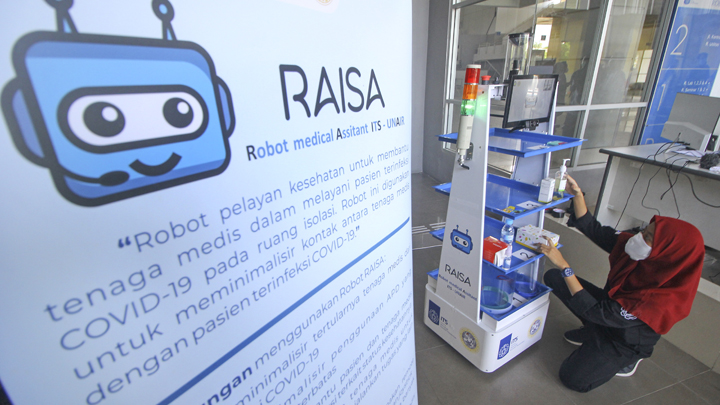Disinfectant Robots & Portable Ventilators
Tuesday, May 5, 2020
arsip tempo : 171411369985.

THE four-tiered frame strolled back and forth along the intensive care unit of Airlangga University (Unair) Hospital in Surabaya, East Java. It moves from one room to another carrying medicine, food, and cleaning cloths, remotely controlled by an operator. The ‘ITS-Airlangga Medical Assistant Robot’, or Raisa, was created by the Sepuluh Nopember Institute of Technology (ITS) in Surabaya. “This robot replaces nurses and delivers
...
Subscribe to continue reading.
We craft news with stories.
 For the benefits of subscribing to Digital Tempo, See More
For the benefits of subscribing to Digital Tempo, See More








